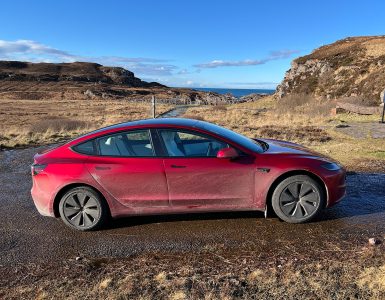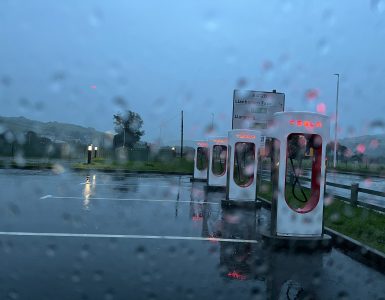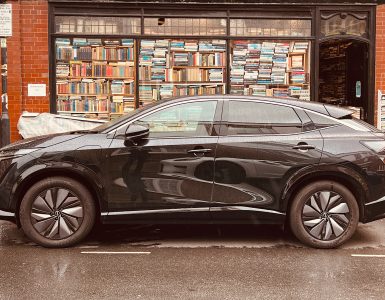The industry blamed others for diesels woes – the mainstream press and politicians causing “confusion about how clean diesels are etc” But if you had to pick 10 things at the crime scene – that took diesel from hero to zero – what would they be and who really killed diesel?
March 2022 Update – Brand diesel is taking a hammering. Having peaked at 50.8% of car sales in the UK in 2012, by 2017 it had fallen to 42%, by October 2020 they fell to 18.4% and by December 2021 it was in single fiigures at 8.4%. In fact sales are now so low that more and carmakers have stopped offering diesel versions of cars altogether.
Looking at the definition of a brand I found this one from the business dictionary.
brand
“Unique design, sign, symbol, words, or a combination of these, employed in creating an image that identifies a product and differentiates it from its competitors. Over time, this image becomes associated with a level of credibility, quality, and satisfaction in the consumer’s mind.”
Carmakers have their own brands but diesel has it’s own set of attributes. So taking diesels as a brand what mistakes led to it being so tarnished in the eyes of consumers, the press, politicians and regulators
1 Diesels being dirty is integral not an accident.
If a brand faces a PR disaster it’s best if the problem results from a specific accidental event, not an attribute of the product that was evident from the beginning.
The Diesel engine started as a problem brand. From the death of its creator in mysterious circumstances in September 1913, the diesel engine’s main attributes were primarily as an economical, efficient but noisy, unrefined, smelly and dirty way of powering a heavy vehicle like a lorry. People wore gloves to fill the tank with diesel. Using diesel as a clean green technology was always going to be fraught with risk. Like the old joke about the Irishman being asked directions who replies “well i wouldn’t start from here”.
Around the year 2000, politicians across Europe were searching for a way to reduce the global warming gas, CO2, without limiting car use. Engineers had worked to detox the diesel brand a little. “Noisy” and “unrefined” were largely consigned to history and “low in CO2” (or good for polar bears) added, giving buyers a warm glow. This glow was enhanced for dieselmakers and motorists alike by the fact they drove out of showrooms in bigger, more powerful & heavier cars than they would have dreamt of running before. These cars were also very profitable although in the end real world emissions were not lower in CO2 than the smaller petrol cars they replaced.
So diesel looked like a winning solution – a brand on the up. Moreover politicians like Gordon Brown fell over themselves to shower diesel buyers with tax breaks.
There was already a cloud on the distant horizon for diesel though. As early as 2004, the then head of V’W predicted emissions regulations would make diesels much more expensive to build, suggesting that by 2010 they would only be fitted on bigger luxury cars. The regulations would make smaller diesels too expensive.
2 Lobbying the EU to weaken emissions regulations was too successful.
Necessary regulation works best when there is a balance between protection of the public and the needs of producers. If regulation swings entirely to the needs of industry expect a big swing towards protection when a problem arises.
Sleazy backroom deals to weaken regulations that are in place to protect public health don’t do credit to those involved when a scandal hits. Lack of legal constraints can also lead to a pattern of worse corporate behaviour unless constrained by a culture of ethics.
2010 came and went and the predictions of diesels failing emissions tests or becoming unaffordable to make appeared wide of the mark. Did any car fail to pass the Euro 5 or 6 emissions test? Possibly the East German Trabant may have failed an EU emissions test. Did any other German, French, British or Italian made diesel fail? Ever? Possibly but very unlikely.
The secret of course wasn’t in the sauce but in the lobbying. Thanks to herculean efforts by the German Government & Angela Merkel in particular, the EU emissions test rules were so weakened and compromised that a steam engine could probably pass on a good day.
A key regulatory weakness was that any emissions control equipment could be turned off when required for “technical reasons” that were not clearly defined or limited. This enabled carmakers, quite legally, in the EU to turn off control emissions equipment in any way they saw fit and whenever they saw fit, as soon as the lab test was complete.
- Temperature gets below 17c? Turn it off
- 22 mins into a journey? Turn it off?
- Weather too hot? Turn it off
- Engine restarted when warm? Turn it off.
Even the officials & politicians in European capitals and in the EU that helped weaken the regulation were apparently shocked at how the industry saw a door that was ajar, and drove an autobahn through it.
Worse still, as the pressure built up before dieselgate, industry lobbyists and Mrs Merkel were ensuring that supposedly even cleaner Euro 6 cars could be as polluting as ever and still pass the test.
“Not only was the Euro 6 test unrepresentative of real world driving, the rules still allowed any emission control equipment to be switched off once the test was done and car was on the road. “
In the end these cars were designed to run dirty with no emissions control for 3 of the 4 seasons of the year.. sometimes all 4!. This cynical approach is just what you don’t want the public to see when scandal breaks. Indeed by still not being open about when they switch off emissions control equipment carmakers risk restarting dieselgate scandal and lawsuits at any time.
At this point the motor industry had a choice. Use the time to develop cars that really were clean before anyone noticed or carry on selling loads of profitable cars up to 30x times as polluting on the road as the regulations were supposed to allow. They went for plan b. Which led to the next problem. The industry got so used making diesels in an unregulated market that, to consumers looked regulated, that they never stopped to think how consumers would perceive diesels when the real situation was revealed.
3 Air quality breaches caused by vehicles in urban areas became measurable
The car industry didn’t just sell a few highly polluting diesels – they did it on such a vast scale across Europe that people could measure it and people could smell it.
The next problem for brand diesel stemmed from sales success. You see, while the effect on air quality of a few super polluting diesels is hard to detect, once sales reach the millions then the air becomes poisoned, toxic – and measurable. Doing it across every city and town in Europe made the source even easier to spot.
Academic studies on urban air quality (ironically required to demonstrate compliance under EU environmental law) expected levels of pollution at the roadside to be improving. After all, polluting diesel cars were passing ever stricter EU emissions tests. As the newer cleaner cars replaced older models roadside air quality should have got cleaner. So they were very surprised to see no improvement, in fact, the opposite. For a while researchers thought maybe there weren’t enough new clean diesels replacing old ones to make a difference. The dieselmakers have played the old diesel dirty, new diesels clean card many times and it certainly helped delay discovery of what was happening. They still use the line today but, like the boy who cried wolf too often, it’s not believed now. For a while though, there was a mystery – how was air getting dirtier if cars were getting cleaner.
It was inevitable that the mystery would be solved but instead of now cleaning up their act, dieselmakers were knocking out Euro5 cars that in on the road tests were probably the dirtiest diesels ever made. Certainly the dirtiest in the last 25 years. The only major success was diesel particulate filters finally and effectively reduced particulate emissions by 99%.
4 Health impact of diesels not getting cleaner was real
Air quality readings alone didn’t make catchy headlines but the effects on peoples health began to be felt. People dying younger because their air is being made toxic by diesels is news
The toxic gases from vehicles are now being found to be linked to massive adverse health effects on almost every part of the human body and all age groups from unborn children in the womb to old age. Low birthweight, permanently shrunken children’s lungs, emergency hospital admissions for asthma, heart disease and lung cancer. Diesel emissions are now being linked to mental health. dementia & even crime rates.
Again the industry had a clear opportunity to clean up. Instead they claimed the tobacco industry defence – no evidence of links to any health effects. They even tried to discredit health studies and then even more bizarrely gas monkeys with diesel fumes to show how safe diesel fumes were. Ironically the monkey tests (conducted in the US with funding from German carmakers) showed that 20 yr old diesels trucks produced marginally lower health effects than so called “clean diesel” cars. They were not published.
5 Breach of stricter US rules exposed the methods used to manipulate EU lab tests.
If you go to the trouble of lobbying for sham EU emissions regulations why would you cheat in the US where the rules against cheating were strict, the penalties large and the process transparent?
“Post “Dieselgate” you sometimes get the feeling VW’s reputation in the car industry is like the teen at a party when parents are away, who turns up the music too loud, pees in the neighbours pool, lobs a stone at their window and gets everyone into trouble when the police are called.”
Having lobbied to create an entirely sham system of EU emissions regulation it was very irritating for EU carmakers to have to build diesels for the US market that had to be clean on the road. Irritating and costly. VW launched an Ad campaign about how clean their TDI diesels were but in reality they knew clean diesels (that really were clean) cost too much to make and run.
So dieselmakers tried a 2 pronged approach to selling diesels in the US. Mrs Merkel the diesel queen was sent to lobby the Americans and California in particular, to loosen their car emissions rules. She failed and so they switched to simply cheating instead. After all it was working so well in Europe.
While US regulations were strict, their tests were performed in a lab just like in Europe. VW who were cheating, quite legally. like the rest of the industry in Europe decided a “dirty mode” for US cars would solve the problem. Yes you had an adblue tank but it would only have a litre of adblue – just enough to run in clean mode during tests. On the road it would pollute over 30x as much. So poison the air and pass the test – that’s a tick then.
This cheat worked well for a while. The US authorities believed the cars were clean. It was only when PEMS equipment that measures emissions from a car as you drive it on the road was used in a study on some American VWs that things started to go wrong. On the road the students performing the study found the VWs were massively polluting despite being clean in the lab. VW denied a problem and the students for a while wondered if they had set up the experiment wrong. Passing it to regulators it was only after several months that more tests confirmed a massive and deliberate fraud. Not just by one company in the US, but quite legally, by most dieselmakers in Europe as well. This excellent article (in English) from Der Spiegel tells the story of how 3 mechanical engineering students in Virginia working on a project for ICCT lifted the lid on dieselgate.
Moreover in the US cheating really was illegal. Massive fines, compensation to owners, buybacks of hundreds of thousands of cars and criminal charges and prison for VW execs followed. Luckily thanks to Mrs Merkel nothing like that happened in Europe until much later.
Ironically the prime push to hold the German carmakers to account has been in the German courts. While the courts & regional prosecutors have striven to hold dieselmaker executives to account much of Mrs Merkel’s Government still has wants to prevent effective oversight of the industry and emissions in German cities. The German Government’s prime aim is to protect diesel sales and diesel owners. The courts efforts have also been hamstrung by the fact they rely on the KBA, the German Government vehicle regulator to measure emission breaches and proposed remediation solutions. The KBA is too prone to industry and political influence to perform this role effectively.
6 Emissions testing meets the real world – New tests showed new diesels were not clean and gave details by make and model
After dieselgate real world testing was done with advanced roadside testing equipment much like a speed camera and PEMS devices strapped to individual cars for several hours.
This equipment had become much more reliable and advanced and could immediately flag up cars that were clean in the lab and dirty on the road. When these results were published in 2016, by Governments, Emissions Analytics and campaign groups it became clear that, on average, even the latest clean diesels produced 7x the NO2 of a petrol car. Some were 25x as much.
Now cars were being named and shamed the whole fraud was becoming clear to the press, the public, to regulators and to politicians. They were not happy. The party was officially over.
This equipment gives a dirty car nowhere to hide. It even had to be included in a beefed up Euro 6 test – using a more realistic lab test called WLTP and an on the road tests using PEMS called RDE1 and RDE2.
Now dieselmakers were caught in a “each way lie”. To defend diesels they had to claim Euro 6 diesels were clean (like the VW Ad in the US ) but at the same time they had to ask for more time (years not months!) to develop cars clean enough to pass the 80mg/km limit on the road (even though this limit had been introduced in 2015!). In the end someone came up with a brilliant argument claiming PEMS equipment wasn’t accurate enough so a margin of error (or conformity factor in EU terminology) would be needed. Of 210% more than the limit!
Effectively existing diesels that could never pass the test were allowed to remain on sale until September 2019, while new models launched since September 2017 could remain 3x as polluting as a petrol car. Really clean then! In fact under current EU plans no diesel car will have to pass the 80mg/km limit that was meant to apply from 2015 until 2023! Even by 2020 under RDE2 new diesels will be allowed to be 2x as dirty as a petrol car! The sham is now entirely exposed. Or is it?
In fact the cheating extended to MPG figures and CO2 figures. These figures have got more removed from the real world figures for the last 10 years. The EU can’t even provide accurate figures on boot space or a realistic range for an electric car.
For consumers it meant more money on fuel to run their cars and the prospect of being punished for being the victims of fraud by dieselmakers.
For the EU it meant CO2 figures that massively overestimated the falls in CO2 from cars. The new WLTP testing should help here but it won’t be used for taxation until at least 2020. Essentially this is extending a massive tax fraud, as vehicles are being taxed on CO2 values about a third lower than they really produce.
7 Technical issues with cleaning up diesels
Clean diesel tech is still expensive and complex
Dieselmakers didn’t make their cars dirty because they wanted to pollute the air – they did it because they didn’t have an affordable technology to clean up dirty diesel exhausts.
There are a variety of methods of cleaning up diesels but the only truly effective one is known as SCR and uses an ammonia based additive called Adblue. Sometimes Adblue is used with other clean-up tech. Problem solved then? Not really.
Ablue systems are expensive to fit and for some cars need an enormous amount of additive. One VW engineer claimed in a German court that a VW 3.0 Touareg would need nearly half a litre of Adblue for every litre of diesel. This would take lots of refilling or an enormous heavy tank. Carmakers got round this by fitting a small 1-5 litre tank but only using Adblue during a test or in summer. New models have to fit tanks up to 35 litres.
At least cars with Adblue are clean right? Well.. maybe. Setup is complex and some cars are still several times as polluting as a petrol car when using the system.
What’s more relevant is Adblue is most effective out of town on long fast journeys in light traffic and least effective in slow traffic or short journeys. Why? Well the system has to be hot to work – it takes around 8 minutes to warm up using heat from the engine exhaust. In slow traffic idling or when stop start turns off the engine it never reaches an ideal operating temperature. And of course, as at August 2019 we are not aware that any carmaker has disclosed at what situations or temperatures they turn down the adblue system. None are likely to operate below 3c. Most are likely to be programmed to pollute massively below 7c and 17c or up to about 75% of the time they are driven.
When used in buses they sometimes get round this by heating the system electrically or adding weights to make the engine work harder and the exhaust hotter. New adblue technology may make it more effective but is not yet in production for cars.
So making a diesel clean also makes it more expensive to buy, run and repair and doesn’t work well when most needed. Carmakers have succeeded in making a tiny number of diesels clean but even these may be dirty in certain driving conditions or temperatures. This is where even independent test results need to be treated with caution as proof diesels are clean. A diesel might be as clean as a petrol car when tested at 14c but 10x as polluting when driving the next day when the temperature is 7c.
On particulates, the filters are more effective in some ways. They reduce particulates from a diesel exhaust by 99% so no problems there? Well actually there is – the filters store the particulate, but then need a time driving at speed to empty them out. Just hope you’re not behind a car emptying it’s “hoover bag” in front of you on the M3. Like never emptying a vaccume cleaner if you don’t ever drive fast enough to empty the bag the whole thing gets clogged and breaks. Faced with a garage bill of nearly £1,000 to replace it some owners remove the filters and drive illegally without a DPF. Until now this has been hard to spot but MOT checks for this begin in spring 2018.
8 Euro 6 Regulations and dieselmakers are not open and transparent about emissions
The industry has bluffed and refused to be open and transparent about which diesels were clean and when. It just repeats the tired mantra that all Euro 6 diesels are clean, and comparable in emissions to a petrol cars. It simply isn’t true and nor is it believed by consumers.
A few are clean on the road. Around 10% of Euro 6 diesels comply with the 2015 80mg/km limit on the road. Around 25% of Euro 6 diesels are “only” as polluting as 3 petrol cars. By refusing to tell car buyers which cars really are cleaner they make it impossible for consumers to trust any car industry assurances about diesel emissions.
It seems perverse after a scandal, not to label cars that have at least been proved to comply with the RDE1 (3x a petrol) limit as Euro 7 for example. After all some Euro 6 standard cars are up to 30x a petrol cars emissions of NOx. By comparison after the Perrier scandal the company felt obliged to label untainted bottles as “Nouvelle Production”. By trying to keep even the dirtiest diesels they have fatally undermined confidence even in the cleaner ones.
The other thing is even for the new RDE 1 on the road test the manufacturer still gets to pick the location, the car to be tested and the climate. This means they can still achieve a better test result than a real customer on an average day.
To date to our knowledge , no carmaker has published when it turns off its adblue or other emission control system. They may still do this, we just don’t know if or when. So a clean diesel still could be many times more polluting in winter – or even in spring or autumn or summer too. We just don’t know.
9 Consumers, politicians courts and regulators feel duped and have moved against diesel
“The disengagement is happening. Since Dieselgate, the share of diesel sales has reduced month by month,” said Marchionne. “There’s no point denying that, and it’s clear that the cost of making diesel reach the new standards is going to become prohibitive.” He plans to sell no Alfa, Fiat or Jeep diesels from 2022.” Late head of Fiat Chrysler in Autocar in April 2018
Local politicians including city mayors often have responsibity for ensuring air quality is adequate and legal. When EU officials and national governments created a sham regulatory system for car emissions they created a conflict between courts and cities on the one hand and national governments on the other. Now some officials and states that supported (or were leant on by the German government) to support weakening emissions regulation will have been shocked how the cynically the industry used the loopholes provided. Even a weakened Mrs Merkel is struggling to keep the air dirty in German cities after recent German court decisions.
Many consumers, to be fair, don’t know or care much about how polluting their cars are. What they do know is their tax breaks for driving diesels are slowly being eaten away, they may be charged or banned from urban areas, their MPG never gets close to the official numbers and their diesel is falling in value slowly and may do so quickly in future. And they also know that this happened whether they chose the “greenest” or least green option and whether they bought from a mass market or premium brand. No consumer has come out of this with a feelgood factor intact.
10 First Petrol then Electric Vehicles (EV) improved to the point where diesel was no longer needed
There was a time when German carmakers used to explain to journalists how Toyota had got it wrong by pushing its funny little hybrid technology. While hybrids were ok in town, only diesel engines could efficiently waft drivers inside and between cities unencumbered by an electric drive system that just becomes a load to carry at motorway speeds. With hindsight Toyota’s gamble looked like an astute move that avoided the herd. When Dieselgate erupted Most European carmakers scrambled to find enough petrol engines to power existing models to tide them over while they rushing to develop plugin hybrids and EV’s. Some muttered about how diesel is vital to meeting CO2 targets, ignoring the fact that the legacy car company with the lowest official CO2 in Europe at the time was called.. Toyota.. and it had stopped selling diesel cars. Now of course Toyota has refused to move on and got stuck with on hybrids, an outdated stepping stone to fully electric cars.
For a time while waiting for the future, people reacquainted themselves with petrol cars. Petrol cars are much lower in NOx than the vast majority of diesels, and usually substantially cheaper to buy and maintain. Petrol cars had also now much closer on MPG and CO2 to diesels than they used to be.
Petrol floundered though when trying to power larger heavier cars with inefficient powertrains (like larger 4 wheel drives). Up to around 1.6 tons in weight petrol alone could compete – beyond that diesel needed to be replaced by petrol hybrids. It is therefore not surprising that the last bastion of diesel is amongst the premium brands like Audi, BMW, Mercedes, Land Rover and Volvo selling the oversized dinosaurs of the diesel age like the Audi Q7 A8, Mercedes GLS/GLE, BMW X5, X6, X7 Range Rover and Land Rover Discovery some of which now weigh over 2.5 tons in diesel form.
EU Dieselmakers for a long time had looked at the issue in purely engineering and European terms but the fact is diesel car sales were only ever big in Europe. Diesel claimed to offer a way to drive a nice big car, pick up tax breaks and still feel you’re doing your bit for the planet. It plainly is not that anymore and there are other alternatives that offer that hope.
Not only did people become increasingly open to alternatives to diesel – they also are began to understand that shifting away from all fossil fuel vehicles -diesel, petrol or hybrid is now vital and the only way to deal with the climate emergency. They also know the new EV technology is proven and attractive even if European carmakers especially from Germany were initially slow to offer them. EV’s in the UK offer cuts in emissions of around 65% over their lifetimes compared to combustion and hybrid cars and the only way to have a chance of meeting climate change goals.
Thanks to Tesla and others now delivering advanced Electric cars on a big scale people see that EVs are clean, quicker, great to drive, safer, cost less to run and are the the future. They also know that these are cars that can run on carbon free renewable power and won’t be banned, won’t poison the air, won’t make the streets smell, won’t shrink children’s lungs and won’t stop you enjoying a latte outside on sunny day. The dieselmakers should be thanked for one thing.. by their illegal immoral behaviour they set the scene for all cars to switch from pistons and smoke to electric much faster in the 2020s.
That left old tech carmakers with the dilemma of how to sell the biggest most profitable cars that can only be efficiently propelled by a fuel no one wants any more. The death of diesel brings other casualties. EV’s and self driving technology threaten all future private car sales and the supremacy of the German car industry. EV production should be easier and cheaper to build – opening up competition but threatening jobs in the industry. Self driving cars offer the opportunity to provide the same number of journeys on cars that you just summon when you ride, with around 6x fewer vehicles. Why? Well privately owned cars sit around for over 90% of the week parked and depreciating.
This raises another Achilles heel for diesel. Not only did it poison the air..it was never really an effective way to combat the climate emergency. An EV can run on renewable energy – a shared autonomous EV that requires around double the CO2 to construct will offset that in a long life cycle with less maintenance and much more efficient use. If anything, its surprising any buyers are still choosing diesel.
Diesel and petrol fuel sales volumes are the true measure whether we are reducing CO2 from fossil fuels in road transport. Even if half of new cars sold were EVs starting tomorrow, it would take years for the amount of fossil fuel we use to start to fall far.
In Norway, where they are years ahead of the rest of Europe in switching to EVs, diesel car sales fell from 60% in 2013 to 17% in 2019. It took 5 years for diesel fuel sales to begin to fall and sales from 2018 even then were only declining by 2% per quarter. This will only accelerate only when many more diesel vehicles come off the road than are added – either because of age or by being banned
Summary
What seems clear is that even if you looked at it from perspective of an enthusiast, for piston engines and diesel ones in particular, the industry’s approach to the dieselgate crisis failed and hastened diesels demise. The knife that killed diesel was wielded from inside the car industry, not from outside. What others did was shine a light on it. The effects of the dieselmakers actions extend far beyond the toxic stench of their engines and even opened up debate about the role of the private car in our cities at all. Quite an own goal.






